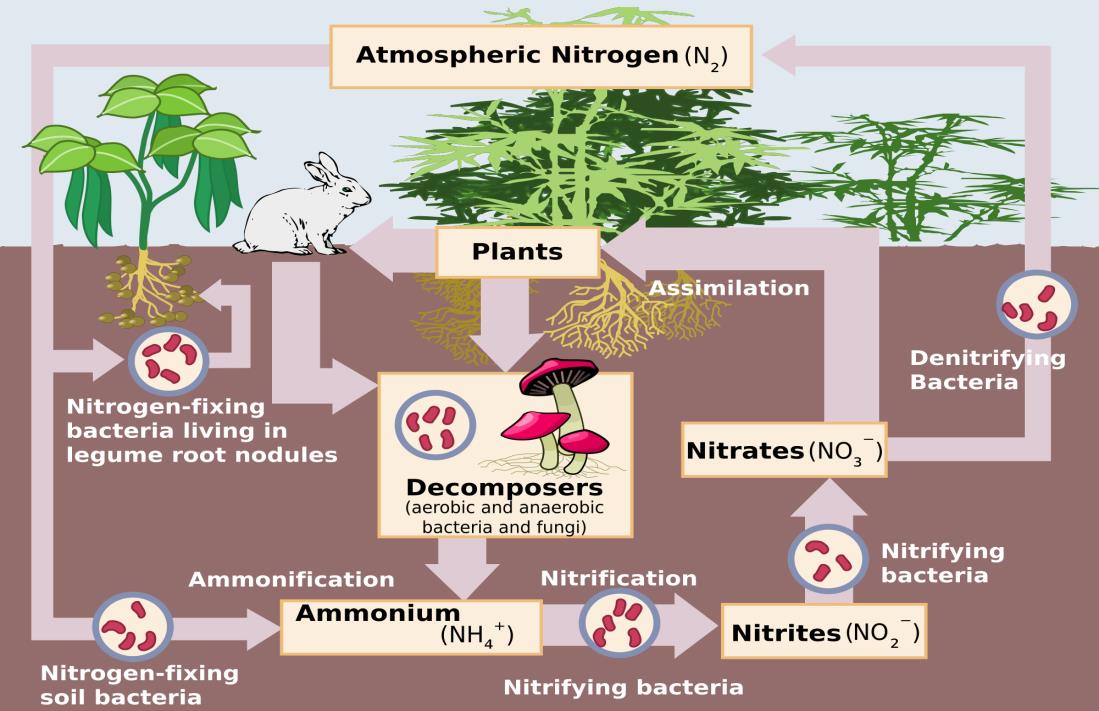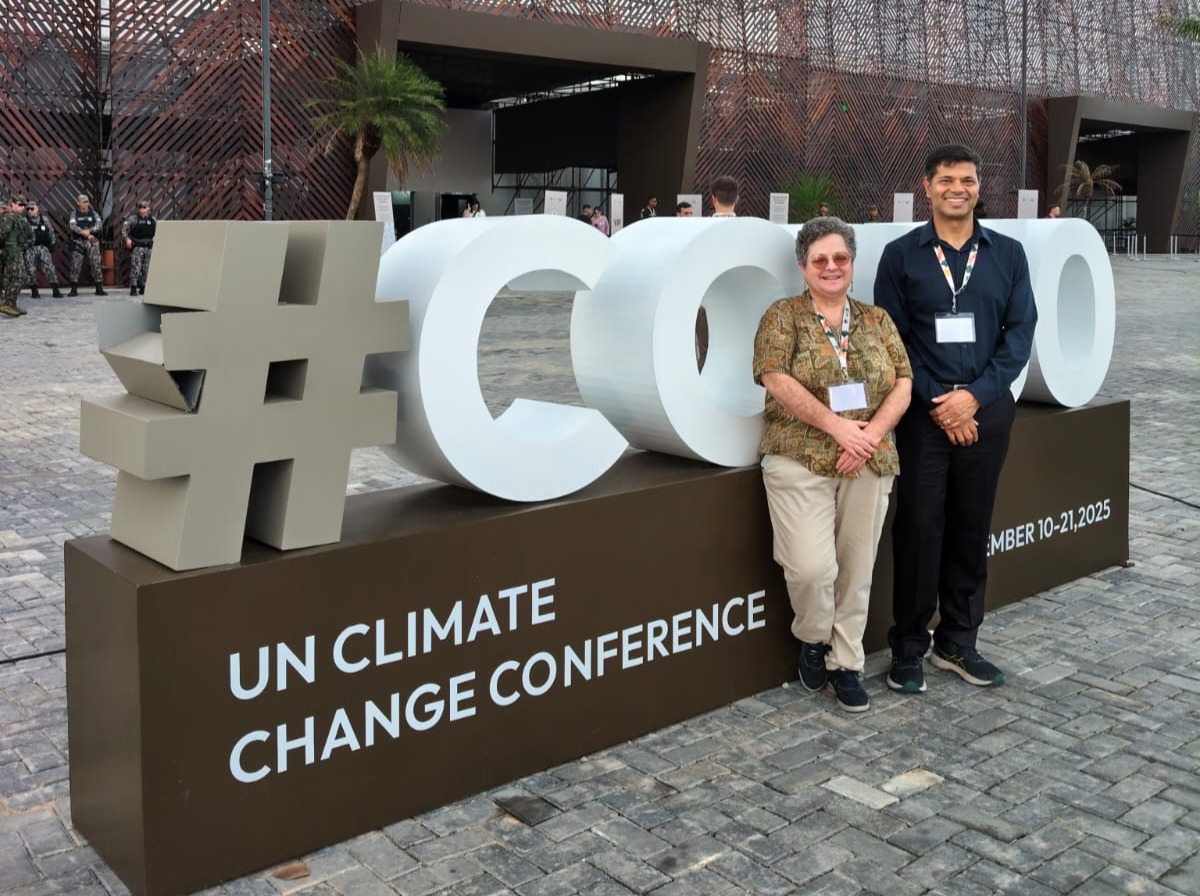Half Wasted: Fertilizer Overuse, Pollution, and the Global Nitrogen Cycle – The Equation – Union of Concerned Scientists

Report on the Environmental and Socioeconomic Impacts of Synthetic Nitrogen Fertilizer Overuse in United States Agriculture
Introduction: A Challenge to Sustainable Development Goals
The overuse of synthetic nitrogen fertilizer in United States agriculture presents a significant challenge to achieving multiple Sustainable Development Goals (SDGs). While often overlooked as a pollution source, current agricultural practices contribute to a multifaceted crisis impacting climate, water, soil, and human health. This system, which incentivizes the application of approximately twice the amount of fertilizer that crops can absorb, directly conflicts with the principles of sustainable production and consumption (SDG 12), climate action (SDG 13), and the protection of ecosystems both on land and in water (SDG 14 & SDG 15).
Impacts on Climate and Environmental Health
Contribution to Climate Change (SDG 13: Climate Action)
The overapplication of nitrogen fertilizer is a primary driver of climate change within the agricultural sector. A significant portion of excess fertilizer is converted by soil microbes into nitrous oxide (N2O), a greenhouse gas with a warming potential 265 times greater than carbon dioxide.
- In 2022, N2O constituted 6% of all heat-trapping emissions in the United States.
- Agricultural soil management is responsible for approximately 75% of the nation’s total N2O emissions.
- This direct contribution to greenhouse gas emissions undermines global efforts to take urgent action to combat climate change and its impacts.
Degradation of Water and Soil Resources
Excess nitrogen has severe consequences for water quality and soil health, directly impeding progress on SDG 6 (Clean Water and Sanitation), SDG 14 (Life Below Water), and SDG 15 (Life on Land).
Water Pollution (SDG 6 & SDG 14)
Unused fertilizer runs off agricultural fields as reactive nitrogen (nitrates), polluting aquatic ecosystems.
- Eutrophication and Dead Zones: Nitrate runoff fuels rapid algal blooms, which deplete dissolved oxygen in water bodies. This process creates hypoxic “dead zones” where aquatic life cannot survive, severely damaging marine and freshwater ecosystems. The recurring dead zone in the Gulf of Mexico, largely caused by Midwest fertilizer runoff, is a primary example, costing an estimated $2.4 billion in lost livelihoods.
- Drinking Water Contamination: Nitrates leach into groundwater, contaminating drinking water supplies. This poses a significant public health risk, challenging the goal of ensuring access to safe drinking water for all and directly impacting SDG 3 (Good Health and Well-being). Agricultural communities are often the most vulnerable.
Soil Degradation (SDG 15 & SDG 2)
The long-term viability of agricultural land is threatened by fertilizer overuse, which compromises goals related to sustainable food production and terrestrial ecosystems.
- Soil Acidification: High doses of synthetic nitrogen acidify soils.
- Loss of Biodiversity: The practice disrupts and suppresses beneficial microbial communities and harms earthworm populations essential for soil aeration and fertility.
- Reduced Resilience: Over time, soil structure degrades, reducing its ability to retain water and nutrients. This creates a dependency on increasing chemical inputs to maintain yields, undermining the long-term productivity required to achieve Zero Hunger (SDG 2).
Disruption of the Natural Nitrogen Cycle
Human activities, primarily the industrial production of fertilizer via the Haber-Bosch process, have fundamentally altered the global nitrogen cycle. This process has overloaded the environment with reactive nitrogen, bypassing the slow, natural biogeochemical processes that maintain ecological balance.
Key Processes of the Natural Nitrogen Cycle
- Nitrogen Fixation: The conversion of atmospheric nitrogen (N2) into ammonia (NH3), naturally performed by lightning and symbiotic bacteria.
- Nitrification: The conversion of ammonia into nitrites and nitrates by soil microbes, making nitrogen available for plant uptake.
- Denitrification: The conversion of excess soil nitrates back into atmospheric N2 and N2O by microbes, completing the cycle.
- Ammonification: The breakdown of organic nitrogen from dead organisms back into ammonia by decomposers.
Industrial agriculture short-circuits this cycle, introducing massive quantities of reactive nitrogen that natural systems cannot process, leading to the widespread pollution detailed in this report.
Recommendations for a Transition to Sustainable Agriculture
Addressing nitrogen pollution requires a systemic shift toward farming practices that align with the Sustainable Development Goals. This involves policy reform, the adoption of agroecological methods, and support for farmers transitioning away from a high-input model.
Policy and Programmatic Reforms
Government policies must be reformed to promote sustainability over the overproduction of nitrogen-intensive commodity crops.
- Reform Subsidies: Re-evaluate and reform market-distorting subsidies, such as federally subsidized crop insurance, that incentivize planting on vulnerable land and discourage crop diversification.
- Invest in Conservation: Increase funding and technical assistance for proven USDA programs like the Conservation Stewardship Program (CSP) and the Environmental Quality Incentives Program (EQIP). These programs help farmers reduce reliance on synthetic inputs, improve soil health, and protect water quality.
Adoption of Agroecological Practices
A large-scale transition to agroecology is necessary to build resilient food systems that support environmental and human health, contributing to SDG 2, SDG 12, and SDG 15.
- Optimize Fertilizer Use: Implement precision agriculture techniques, including soil testing and targeted application, to ensure fertilizer is applied only where and when needed.
- Implement Soil Health Practices: Promote the widespread use of cover crops, buffer strips, restored wetlands, and managed grazing to keep nutrients in the soil and build long-term fertility.
By realigning agricultural systems with the principles of agroecology, it is possible to reduce nitrogen pollution, mitigate climate change, protect vital ecosystems, and ensure the long-term economic viability of farming communities, thereby making significant progress toward the 2030 Agenda for Sustainable Development.
1. Which SDGs are addressed or connected to the issues highlighted in the article?
SDG 2: Zero Hunger
The article discusses agricultural practices, farmer livelihoods, and soil health, which are fundamental to sustainable food production. It highlights how the current system of fertilizer overuse harms farmers by “raising their input costs, degrading their soil over time, and locking them into cropping patterns that are hard to escape,” thereby threatening the long-term viability of food production.
SDG 3: Good Health and Well-being
The article directly connects fertilizer overuse to human health risks. It states that nitrogen in the form of nitrate “leaches into groundwater sources and can end up contaminating drinking water supplies.” It further notes that “Exposure to nitrate is linked to a variety of serious health problems.”
SDG 6: Clean Water and Sanitation
This goal is central to the article’s discussion. The text extensively details how fertilizer runoff pollutes water bodies. It explains that excess nitrogen “washed into lakes and streams” creates “algal blooms” which in turn lead to “low- to no-oxygen areas in aquatic ecosystems called ‘dead zones’ where nothing can survive.”
SDG 12: Responsible Consumption and Production
The core issue described is the inefficient and unsustainable use of a chemical product. The article states that “as much as 50% of applied nitrogen fertilizer is in excess of what crops need and is unused by plants.” This points to a pattern of production and consumption (in an agricultural context) that is not responsible or sustainable.
SDG 13: Climate Action
A significant portion of the article is dedicated to the climate impact of fertilizer overuse. It identifies nitrous oxide (N₂O), a byproduct of excess fertilizer, as a “potent heat-trapping gas: 265 times more powerful than carbon dioxide.” It specifies that “agricultural soil management responsible for as much as 75% of the country’s N2O emissions.”
SDG 14: Life Below Water
The article provides a clear example of how land-based pollution affects marine ecosystems. It describes the “dead zone in the Gulf of Mexico,” which is caused by “Nitrogen fertilizer runoff from the Midwest.” This directly impacts marine life and the health of coastal ecosystems.
SDG 15: Life on Land
The impact on terrestrial ecosystems, specifically soil, is a key theme. The article explains that “High doses of synthetic nitrogen acidify soils and disrupt the microbial communities,” reduce “soil biodiversity,” and harm “earthworm populations that keep soils aerated and fertile.” This leads to long-term soil degradation.
2. What specific targets under those SDGs can be identified based on the article’s content?
SDG 2: Zero Hunger
- Target 2.4: By 2030, ensure sustainable food production systems and implement resilient agricultural practices that increase productivity and production, that help maintain ecosystems, that strengthen capacity for adaptation to climate change, extreme weather, drought, flooding and other disasters and that progressively improve land and soil quality.
The article’s call for a “large-scale shift to farming practices based on the science of agroecology” and the use of “cover crops, buffer strips, restored wetlands, and managed grazing” to “build long-term soil health” directly aligns with implementing resilient and sustainable agricultural practices to improve soil quality.
SDG 3: Good Health and Well-being
- Target 3.9: By 2030, substantially reduce the number of deaths and illnesses from hazardous chemicals and air, water and soil pollution and contamination.
The article’s focus on nitrate contamination of drinking water from fertilizer runoff and its link to “serious health problems” directly relates to reducing illnesses from water pollution and chemical contamination.
SDG 6: Clean Water and Sanitation
- Target 6.3: By 2030, improve water quality by reducing pollution, eliminating dumping and minimizing release of hazardous chemicals and materials…
The entire discussion on nitrogen runoff causing algal blooms, dead zones, and groundwater contamination is about the need to reduce chemical pollution from agricultural sources to improve water quality.
SDG 12: Responsible Consumption and Production
- Target 12.4: By 2020, achieve the environmentally sound management of chemicals and all wastes throughout their life cycle… and significantly reduce their release to air, water and soil in order to minimize their adverse impacts on human health and the environment.
The article’s central theme of fertilizer “overuse” and the resulting release of nitrous oxide into the air and nitrates into water and soil is a direct example of the need for environmentally sound management of chemicals (fertilizers) to minimize environmental impact.
SDG 13: Climate Action
- Target 13.2: Integrate climate change measures into national policies, strategies and planning.
The article advocates for policy changes to address the climate impact of agriculture, such as “reforming market-distorting subsidies, particularly federally subsidized crop insurance,” which encourages the cultivation of nitrogen-intensive crops. This is a call to integrate climate change measures into agricultural policy.
SDG 14: Life Below Water
- Target 14.1: By 2025, prevent and significantly reduce marine pollution of all kinds, in particular from land-based activities, including marine debris and nutrient pollution.
The article explicitly identifies “Nitrogen fertilizer runoff from the Midwest” as a major contributor to the “dead zone in the Gulf of Mexico.” This is a textbook example of nutrient pollution from a land-based activity impacting a marine ecosystem.
SDG 15: Life on Land
- Target 15.3: By 2030, combat desertification, restore degraded land and soil, including land affected by desertification, drought and floods, and strive to achieve a land degradation-neutral world.
The article describes how fertilizer overuse “harms the soil itself,” leading to acidification, reduced biodiversity, and degraded, “cement-like” soils. The proposed solutions, such as agroecology, aim to restore and build soil health, directly addressing the goal of restoring degraded land and soil.
3. Are there any indicators mentioned or implied in the article that can be used to measure progress towards the identified targets?
Indicator for Target 13.2 (Climate Action)
- Indicator: Greenhouse gas emissions from agriculture.
The article provides specific data points that can be used as indicators. It states that in 2022, “N₂O accounted for 6% of all heat-trapping emissions in the United States” and that “agricultural soil management responsible for as much as 75% of the country’s N2O emissions.” Tracking these percentages over time would measure progress.
Indicator for Target 14.1 (Life Below Water)
- Indicator: Measurement of nutrient pollution and its impact on coastal waters.
The article provides a direct, measurable indicator by citing a specific report: “In 2025, the National Oceanic and Atmospheric Administration reported the size of this dead zone at 4,402 square miles.” The size of the Gulf of Mexico dead zone is a recurring metric used to measure the extent of nutrient pollution.
Indicator for Target 6.3 (Clean Water and Sanitation) & 3.9 (Good Health)
- Indicator: Concentration of nitrates in water sources.
While not providing a specific number, the article implies this indicator by stating that “Nitrate contamination is a widely reported problem in agriculture-heavy states” and that it can “end up contaminating drinking water supplies.” Monitoring nitrate levels in groundwater and public water systems would be the direct indicator.
Indicator for Target 12.4 (Responsible Consumption) & 2.4 (Zero Hunger)
- Indicator: Nutrient use efficiency in agriculture.
The article implies this indicator by stating that “as much as 50% of applied nitrogen fertilizer is in excess of what crops need and is unused by plants.” A key measure of progress would be the reduction of this percentage, reflecting more efficient fertilizer use.
Indicator for Target 15.3 (Life on Land)
- Indicator: Measures of soil health.
The article implies the use of soil health indicators by describing the negative impacts of fertilizer overuse, such as soil acidification, disruption of “microbial communities,” and harm to “earthworm populations.” Progress could be measured by tracking metrics like soil pH, organic matter content, and microbial biodiversity.
4. Create a table with three columns titled ‘SDGs, Targets and Indicators” to present the findings from analyzing the article.
| SDGs | Targets | Indicators |
|---|---|---|
| SDG 2: Zero Hunger | 2.4: Ensure sustainable food production systems and implement resilient agricultural practices… that progressively improve land and soil quality. | Proportion of nitrogen fertilizer applied in excess of crop needs (mentioned as up to 50%). |
| SDG 3: Good Health and Well-being | 3.9: Substantially reduce the number of deaths and illnesses from hazardous chemicals and air, water and soil pollution and contamination. | Incidence and levels of nitrate contamination in drinking water supplies. |
| SDG 6: Clean Water and Sanitation | 6.3: Improve water quality by reducing pollution… and minimizing release of hazardous chemicals and materials. | Concentration of nitrates in groundwater and surface water. |
| SDG 12: Responsible Consumption and Production | 12.4: Achieve the environmentally sound management of chemicals… and significantly reduce their release to air, water and soil. | Percentage of excess fertilizer applied; Amount of nitrogen runoff from agricultural lands. |
| SDG 13: Climate Action | 13.2: Integrate climate change measures into national policies, strategies and planning. | Percentage of national greenhouse gas emissions from agricultural N₂O (mentioned as 75% of US N₂O emissions). |
| SDG 14: Life Below Water | 14.1: Prevent and significantly reduce marine pollution… in particular from land-based activities, including… nutrient pollution. | Size of the hypoxic (“dead zone”) area in the Gulf of Mexico (mentioned as 4,402 square miles). |
| SDG 15: Life on Land | 15.3: Combat desertification, restore degraded land and soil… and strive to achieve a land degradation-neutral world. | Measures of soil health, including soil acidity, biodiversity, and earthworm populations. |
Source: blog.ucs.org
What is Your Reaction?
 Like
0
Like
0
 Dislike
0
Dislike
0
 Love
0
Love
0
 Funny
0
Funny
0
 Angry
0
Angry
0
 Sad
0
Sad
0
 Wow
0
Wow
0
















































:focal(1500,1000)/https://media.globalcitizen.org/a6/9a/a69a4720-d8a1-4715-b596-18738d03c05c/rotary_polio_hero_image.jpg?#)







/countries/sri-lanka/photo-credit---dmc-sri-lanka.tmb-1200v.jpg?sfvrsn=dc298bcc_1#)




















